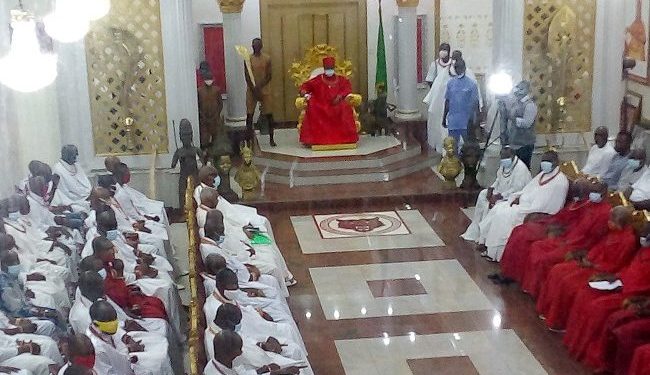Nigeria’s federal government has handed over two bronze treasures to a traditional royal palace in part of a series of restorations of artefacts looted during colonial times.
In a ceremony accompanied by songs, drums and dancers on Saturday, a bronze cockerel and a king’s bust were given to King Uku Akpolokpolor Ewuare II, one of the traditional rulers in Africa’s most populous country.
Thousands of Nigeria’s Benin Bronzes — 16th to 18th century sculptures and art — were pillaged from the palace of the ancient Benin Kingdom and held in museums across the US and Europe.
Nigerian officials negotiated the return of the two objects held in Aberdeen and Cambridge and plan to build a museum in Benin City in southern Edo state, where it hopes to keep more bronzes.
“This return gives us a lot of joy because they symbolized that for us, the hope that all the stolen artifacts will be returned,”Charles Edosomwan, Benin Kingdom High Chief said.
“They´re stolen if they are with you, they are not with us, until you return them, you are in receipt of stolen goods.”
The bronzes are considered some of the most highly regarded works of African art.
“We have been consulting, we have been interacting with various institutions, various museums and various governments across the world,” said Abba Tijani, director of National Commission for Museums and Monuments.
The return of the two artefacts comes as calls grow in Africa for Western countries to return colonial spoils from their museums and private collections.
France, Britain, Belgium, the Netherlands and Germany have all received requests from African countries to return lost treasures.
France last year handed back 26 royal treasures to Nigeria’s neighbour Benin, and President Patrice Talon on Saturday officially opened an exhibition of the objects to the public in Cotonou.
Germany has agreed to start giving back hundreds of ancient pillaged artworks to Nigeria.
The Ethnological Museum in Berlin has 530 historical objects from the ancient kingdom, including 440 bronzes — considered the most important collection outside London’s British Museum.
AFP

